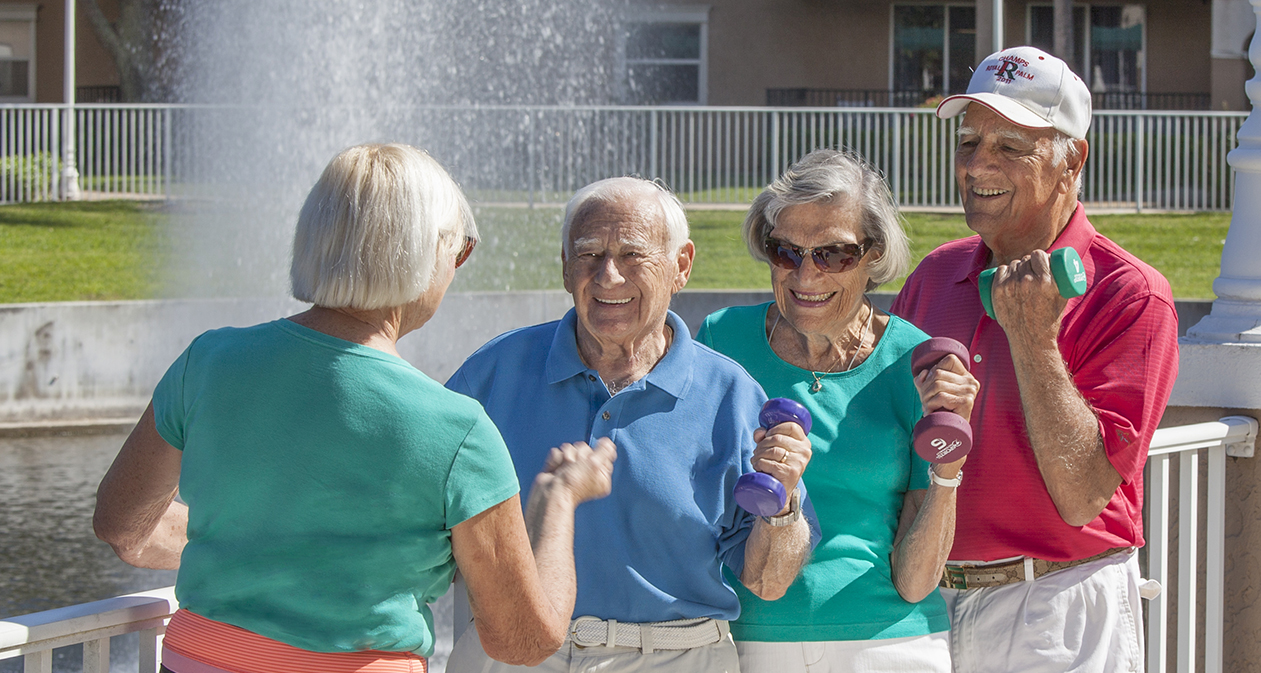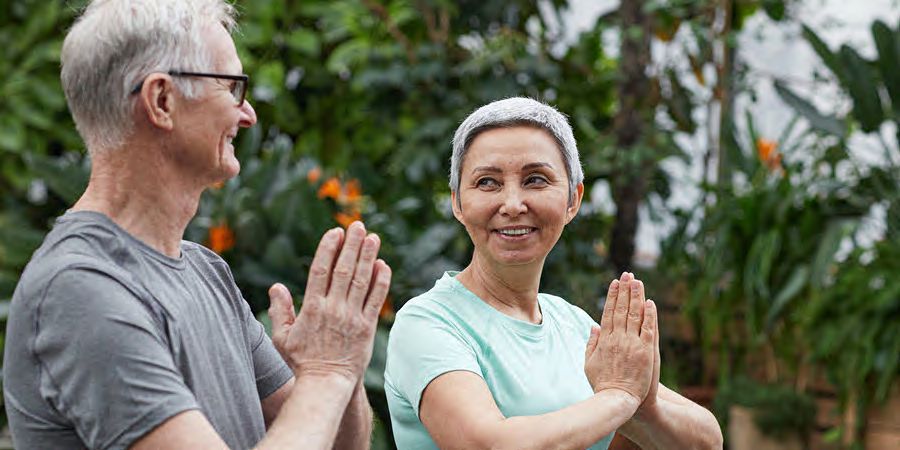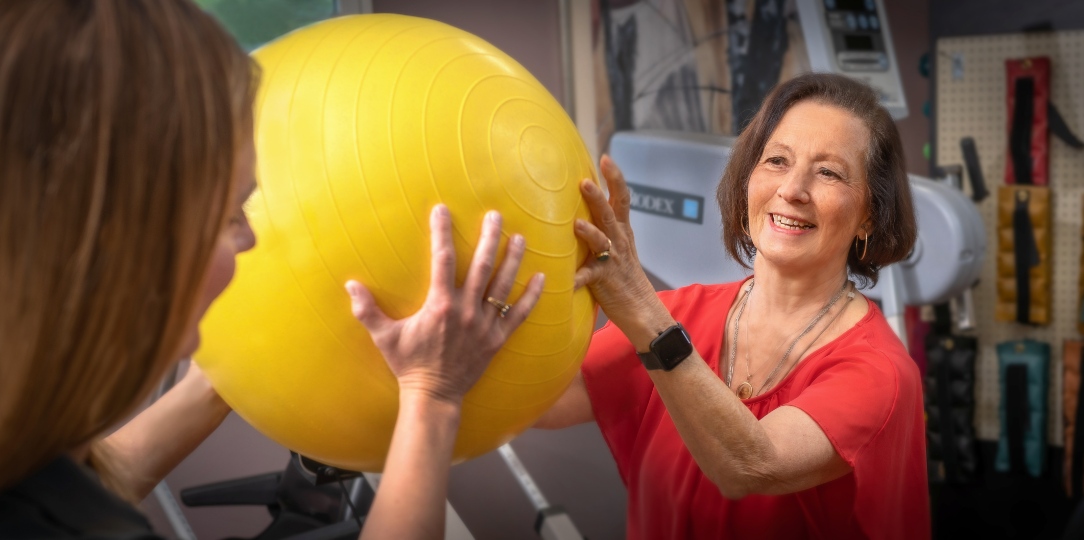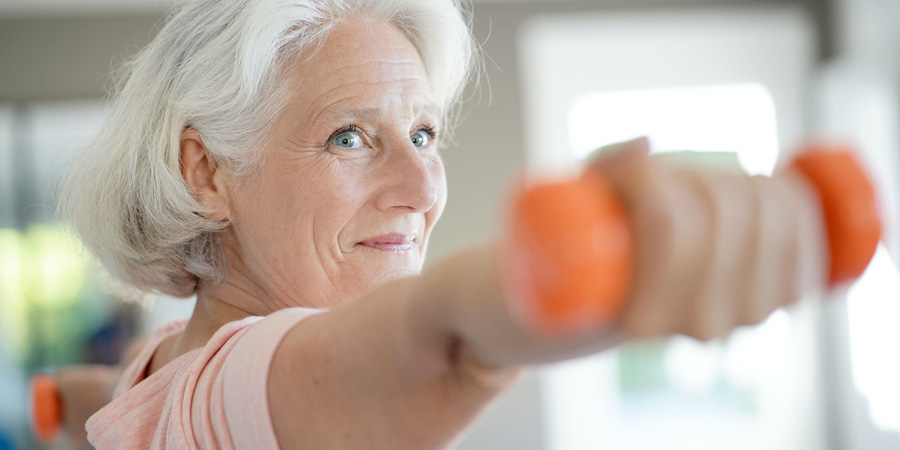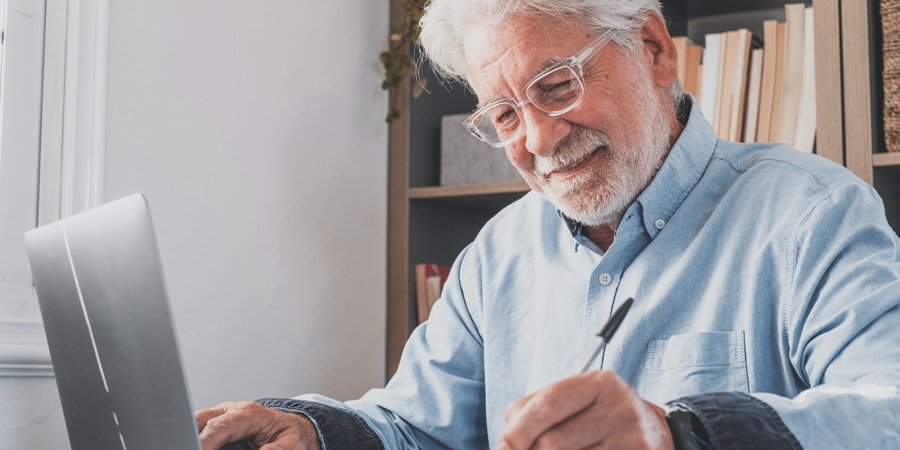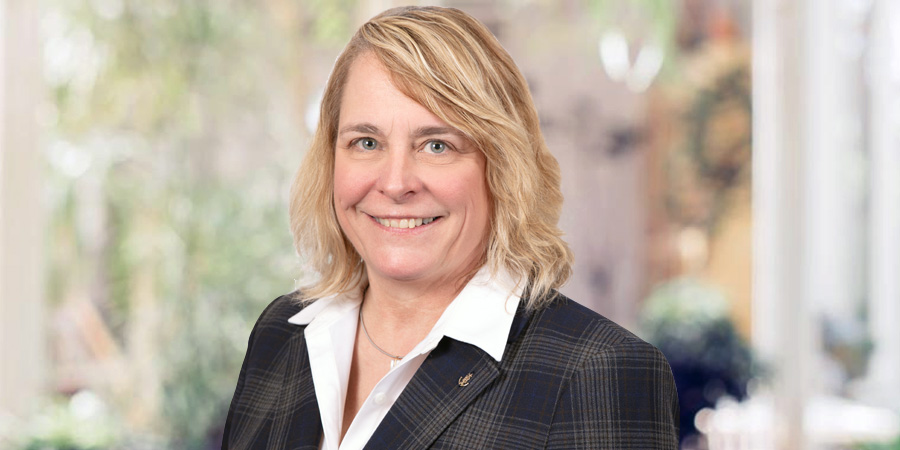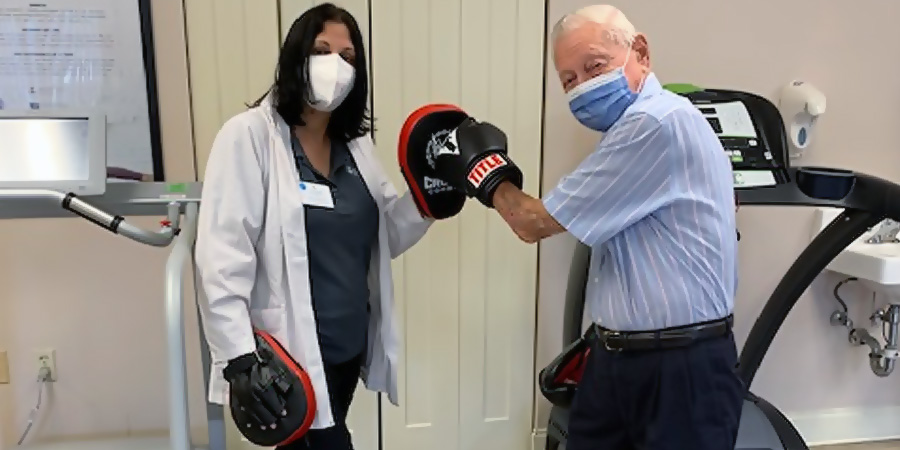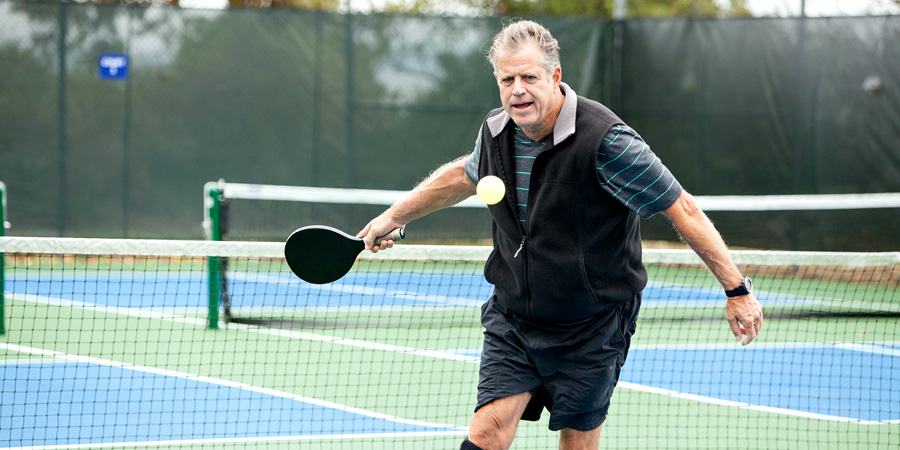Five Ways Exercise Can Reduce Loneliness and Improve Health in Older Adults
May 6, 2021If loneliness were a virus, we’d call it a pandemic. According to the AARP, more than half of adults 50 and over have reported experiencing social isolation due to COVID-19. And that’s a problem: As the AARP also points out, decades of research have taught us that prolonged social isolation and loneliness are more damaging to your health than obesity and as harmful as smoking 15 cigarettes a day.
What can you do? How about a both/and: moving your muscles for your body while making social connections for your mind and spirit. In other words, try exercise but with a twist. Do it in the company of others.
Besides being good for your health, exercising with a buddy or group can be a big part of the cure for loneliness. So call a friend, ask them to join your “team,” and make your exercise routine your social routine, too.
Here are five tips to get started exercising to combat loneliness:
- Walk and talk with your friend.
Get all the neighborhood dirt while cleaning out your arteries. Walking and talking is actually a great barometer to track your fitness— doctors call it the “the talk test.” If you find yourself getting winded, slow down your pace and gradually increase it day by day. - Join a group exercise class.
Studies have shown that group exercise class can reduce the symptoms of depression by 30% or more in exercising older adults. (If you hate exercise but enjoy being with friends, this might be the cure for you.) - Join a sport club or league.
Tennis or golf, volleyball or pickleball—choose something new or a past pastime. Rediscover your competitive spirit or just enjoy the camaraderie of a team. Leagues have schedules you commit to, making it more likely you’ll stick with it, especially if you don’t like to let others down. - Work out with a personal trainer.
A personal trainer will motivate you while also providing the bonus of companionship. Ageility offers fitness training from certified instructors who focus on where you’re at right now as well as your personal goals. Find out if there’s an Ageility clinic near you. - Revisit an old exercise “flame.”
Haven’t played tennis or golf (or something else) in 20 years but want to start up again? Pick up that racquet or nine-iron and remember what you loved about the sport, and don’t worry if you’re rusty. Ask a friend you used to play with or a newer acquaintance to join you once a week for a set date. - Try a partner workout.
Simple exercises can become a lot more fun with a friend. Watch our Ageility trainers demonstrate a simple partner workout – you simply can’t do it alone.
You get the picture. This pandemic time is a time to lean on others to get you moving again. The great thing is, soon you won’t be leaning but standing up straight. Exercise can be much easier when you’re not the only one doing it. Plus, if you invite a friend to join you, chances are they’re in the same boat and will be grateful you asked.
Tip: Especially if you’ve been sedentary, consult your doctor or a physical therapist before starting an exercise regimen. Ageility therapists and fitness trainers are specially qualified to work with older adults and help them reach their goals.


